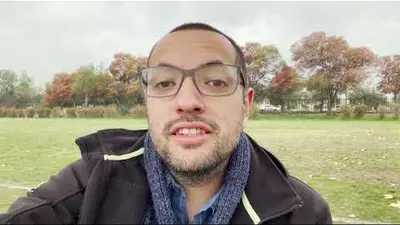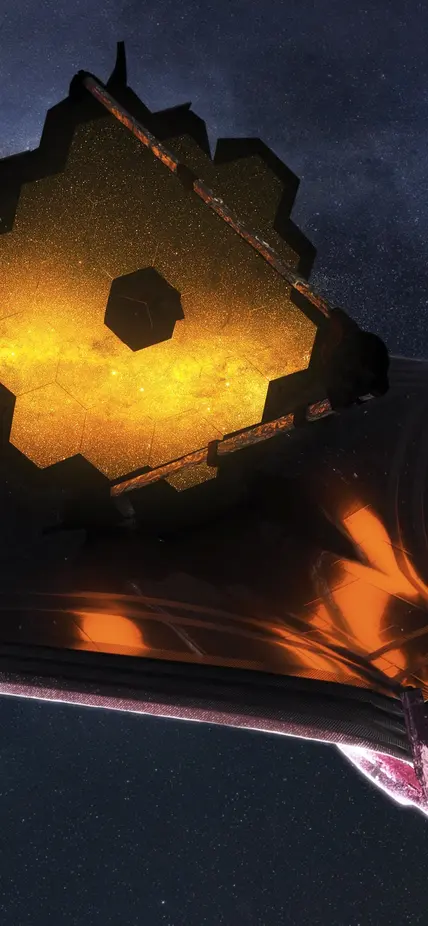JWST continues to revolutionize our understanding of the universe, allowing us to see distant galaxies, exoplanets, and even our own Solar System with fresh eyes.
“The Webb telescope was built to do four things and we showed that it could do all four of those on the first day that we released images,” said JWST Senior Project Scientist Jane Rigby, who was a Carnegie postdoc between 2006 and 2010. This spring, she shared her JWST story with a packed house at the Huntington Library, Museum, and Botanical Gardens as part of the Observatories’ Astronomy Lecture Series.
“We are understanding our own place in the universe and how we came to be,” she added, explaining that since last July, when the first public images from JWST were released by the White House, “the data have just been pouring in and it has been so much fun.”
Of the first round of projects selected to use JWST, six were headed up by scientists affiliated with Carnegie and their data-gathering and analysis efforts continue. What’s more, earlier this year four initiatives with Carnegie principal investigators were chosen for JWST’s next cycle of telescope time allocations. Incredibly, two of these individuals, Peter Gao and Johanna Teske, are second-timers to the JWST club.
Galaxy Brain:
Carnegie’s Gwen Rudie and Allison Strom, formerly a Carnegie-Princeton Postdoctoral Fellow, now a Northwestern professor, were the first of the six Carnegie-affiliated teams for which JWST made observations. Their project, called CECILIA, set out to understand the compositions of a set of ancient galaxies in order to learn about the remarkable growth that they experienced in the universe’s youth. They will publish their first paper soon.
“We think these early galaxies have very, very different chemistry from our own Milky Way and the galaxies that surround us today. And with CECILIA, we will be able to figure out precisely how different they really are,” Rudie said last July in the run-up to their observing time.
Another of the first batch of Carnegie JWST users, Drew Newman is still waiting for his assigned observing window, which will happen later this year. He will be pointing JWST at an ancient galaxy about 10 billion light-years from us in order to understand why some galaxies stopped forming stars very early on, even though the universe at the time was a very active place and most galaxies—such as those studied by Rudie and Strom—were just bursting with star formation.
“I'm excited that JWST is turning up entire populations of galaxies in the distant universe that we've never seen before, because they were too faint or too red,” Newman said. “And even for more familiar galaxies, we're seeing new sides of them: their older stars, their chemical makeup, and supermassive black holes.”
Also looking at ancient galaxies is Jorge Gonzalez Lopez from Carnegie’s Las Campanas Observatory in Chile. In his Cycle 2 JWST project, Lopez will be investigating a proto-cluster of galaxies from when the universe was only 10 percent of its current age. By examining the distribution of gas around these galaxies, he aims to better understand their evolution.
“We get to look back to when it all started and investigate what led to this fantastic complexity,” said Alan Dressler, who chaired the committee in the 1990s that originated the idea for JWST and was part of several research teams in the first year of the extraordinary space telescope’s life.
“This is the first chapter in our origin story,” Dressler explained of his research on bursts of star formation in ancient galaxies from only two billion years after the Big Bang. “These things have made hundreds of millions of stars in a short time, which we didn’t think was possible that early, but somehow nature was doing it.”
Exploring Exoplanets:
Other Carnegie astronomers are using JWST’s power to reveal never-before-seen details about distant worlds.
Johanna Teske is “deep in data analysis mode” on her first-round JWST project and expects “a flurry of papers within the next few months.” Her team, co-led with Natasha Batalha of NASA Ames, is working to better understand the most-common type of planet in our Milky Way galaxy—called super-Earths or sub-Neptunes—which mysteriously are not found in our own Solar System. They are trying to figure out how much variety there is in the atmospheric makeup of these planets, as well as the phenomena that control their composition—information that could reveal whether these types of planets have conditions that are conducive to life.
Looking ahead, Teske's Cycle 2 JWST project team with Carnegie’s Anjali Piette and Nicole Wallack is focused on an ultra-short-period planet called TOI 561 b, which presents a distinct research opportunity due to its extremely close orbit to its host star.
Because 561 b is a so-called lava world, material is melting and evaporating from its surface. By observing the planet’s entire orbit, seeing both its day and night side, the researchers can look for evidence that heat is being redistributed by this process, which would indicate the presence of an atmosphere that they can study. Revealing its composition would tell them about the makeup of the lava and perhaps the planet’s interior.
Peter Gao also deployed JWST to probe exoplanet atmospheres, focusing on a rare type of ultra-low density planets—think cotton candy—which have masses of only a few times that of Earth, but sizes like those of the giant planets in the Solar System. Gao’s project aims to explain the unusual densities of this mysterious planetary class.
For his Cycle 2 program, Gao will be undertaking a theoretical project to help interpret JWST data related to photochemical hazes, which he explained are structures in planetary atmospheres composed of small particles that originate from photochemistry or being “pulverized” by ultraviolet light from the host star. Previous observations have shown that many of the exoplanets that JWST will be used to study are hazy. So, Gao’s work will be useful to astronomers who are looking to better understand their data about these planets or to put it into models.
Lastly, Carnegie’s Shubham Kanodia will use JWST to study seven really massive planets orbiting really low-mass cold stars called red dwarfs—an exoplanet type that was almost unknown until recently.
“It’s a real mystery how these objects form,” Kanodia explained. “Using the power of JWST, we can hopefully understand what their atmospheres look like. So, this will be the first time we have an insight into what the atmospheres of these planets look like and hopefully this will tell us about what helped them form, especially in these really extreme conditions.”
In Their Own Words
Learn about Carnegie-led JWST projects from the space telescope's second cycle of observing time allocations.

JWST Lopez

JWST Teske

JWST Gao

JWST Kanodia
